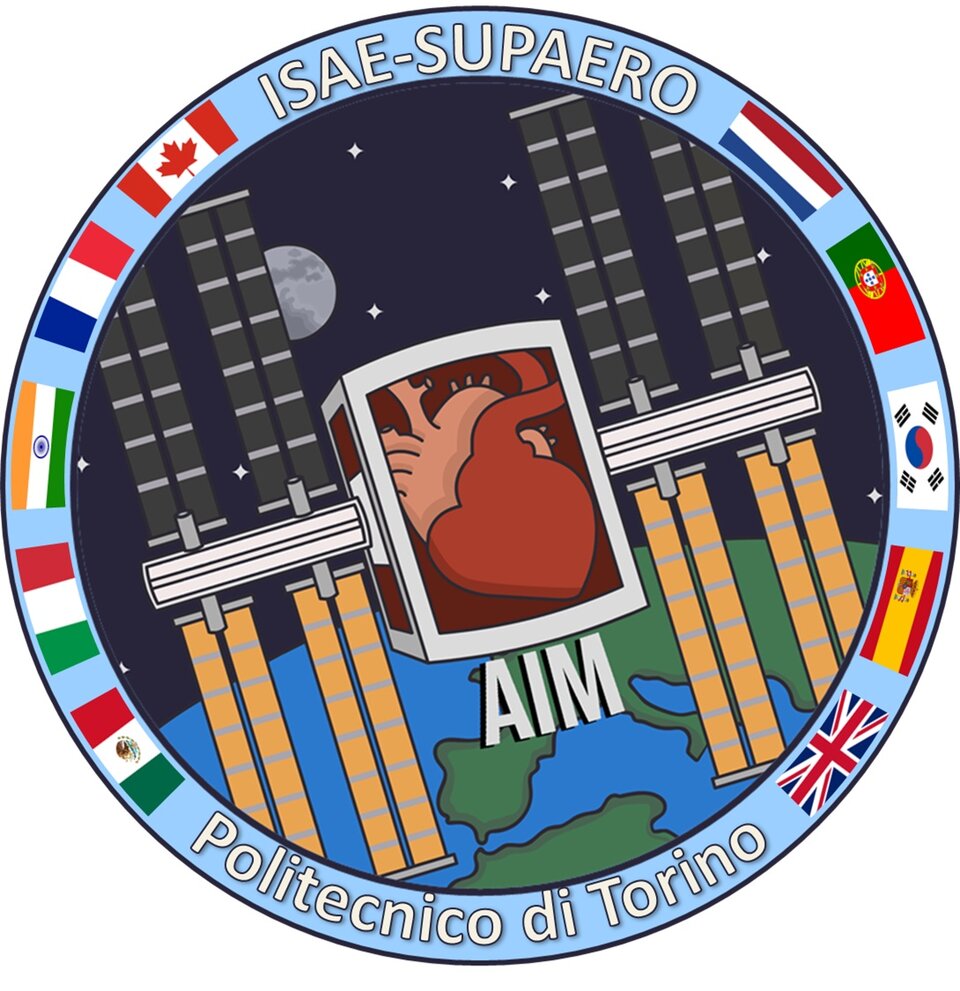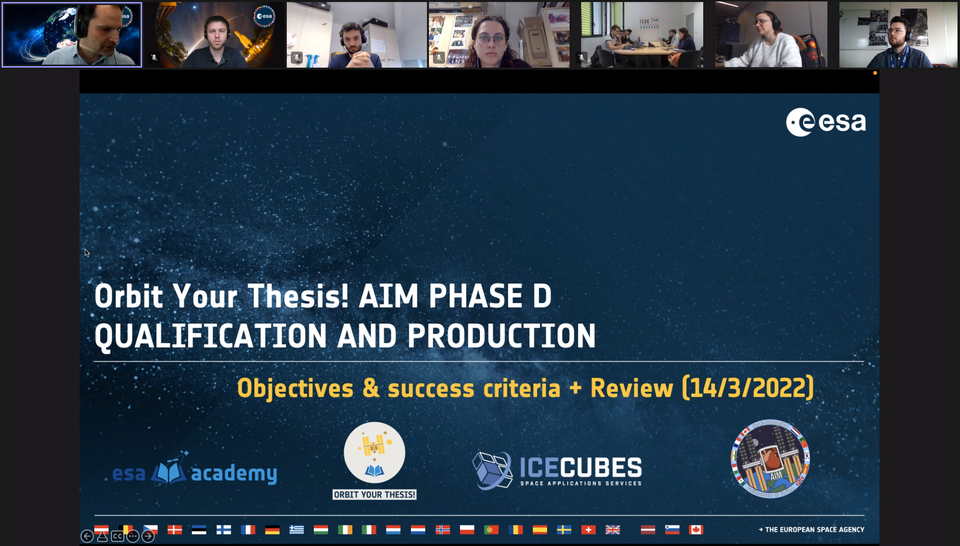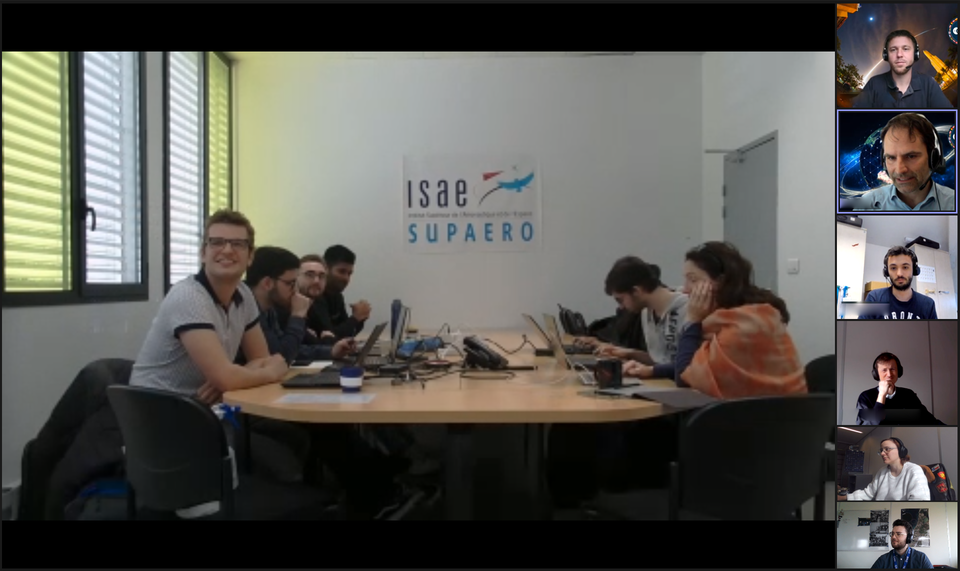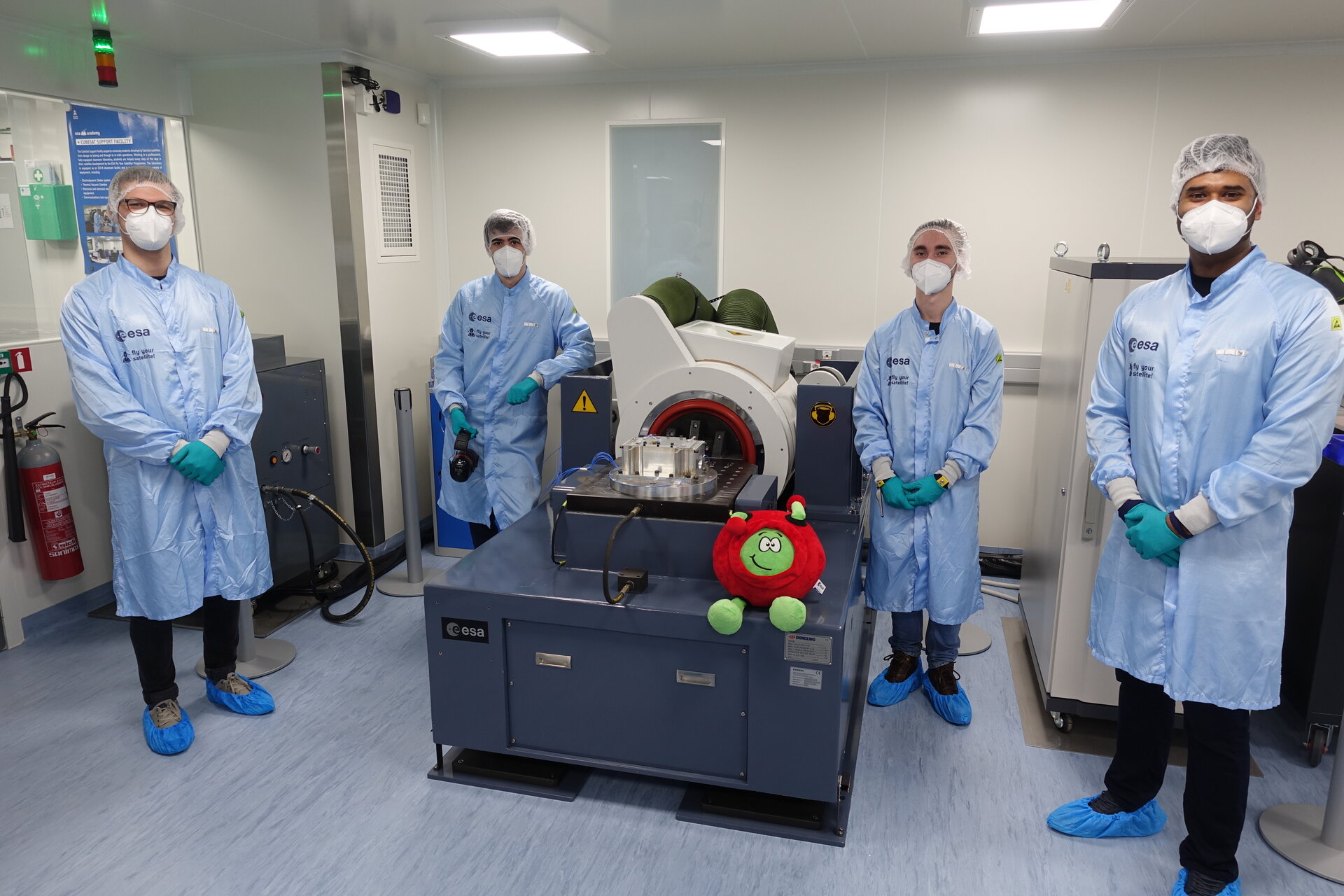The AIM is to go FAR
In brief
ESA Academy’s Orbit Your Thesis! programme gives university students the opportunity to propose innovative experiments and launch them to the International Space Station (ISS). Currently, the AIM team with students from ISAE-SUPAERO (France) and Politecnico di Torino (Italy) is well on its way to the International Space Station with their 2U experiment cube after passing the Flight Acceptance Review.
In-depth
The AIM (Artery In Microgravity) experiment is a test-bench for investigating the hemodynamics in microgravity focusing on coronary heart disease, the most generic form of cardiovascular disease and the cause of approximately 9 million deaths every year.
By studying the vascular hemodynamics in a healthy and unhealthy coronary artery on Earth and in microgravity they hope to research the effect that gravity has on coronary artery hemodynamics, the effects on the performance of implantable devices and to learn more about the risks of myocardial infarction to astronauts on long-distance space flight.

Prior to the FAR, the team successfully concluded random vibration testing, at ESA Education’s CubeSat Support facility in ESEC, Belgium. This ensured their experiment is compatible with the vibrations it will encounter when launching into orbit. One week after this, the team participated in an interface test to validate their hardware and software with the ground model of the ICE Cubes Facility at Space Application Services in Belgium.
The AIM student team have been putting in long days and nights in preparation for their Flight Acceptance Review –a crucial last step before being able to launch their experiment. The purpose of these meeting is to ensure that an experiment is fully tested and built correctly, is qualified for launch, has no outstanding design issues, has a ready and tested ground segment, and that the project meets all the pre-set requirements such as safety requirements to be operated on the ISS. – Not an easy task when you have a fluidics system.

The Flight Acceptance Review, like many facets of the Orbit Your Thesis! programme, gives students direct access to ESA and industry experts, allowing for the effective transfer of knowledge, and so dramatically improving a mission’s chances of success. In fact, the Orbit Your Thesis! Flight Acceptance Reviews are a lightweight version to those that many ESA satellites undertake before their launch.
Some actions were identified and taken care of before the meeting, a couple were closed during the meeting after discussions, impressed with the demanding work put in by the students, the experts declared the mission ready. The AIM team is now ready for their journey into orbit.

“Going through the FAR has been, once again, an invaluable learning experience to close out this verification and approval process of a space project. We are all extremely happy to see our efforts paying off and eager to see (now for good) our Cube on-board the ISS!” – said a student from the AIM team.
Together with the ESA Education Office and Space Applications Services’ ICE Cubes team, the students will complete the final stages of the launch preparation, with the expectation to launch this summer!


